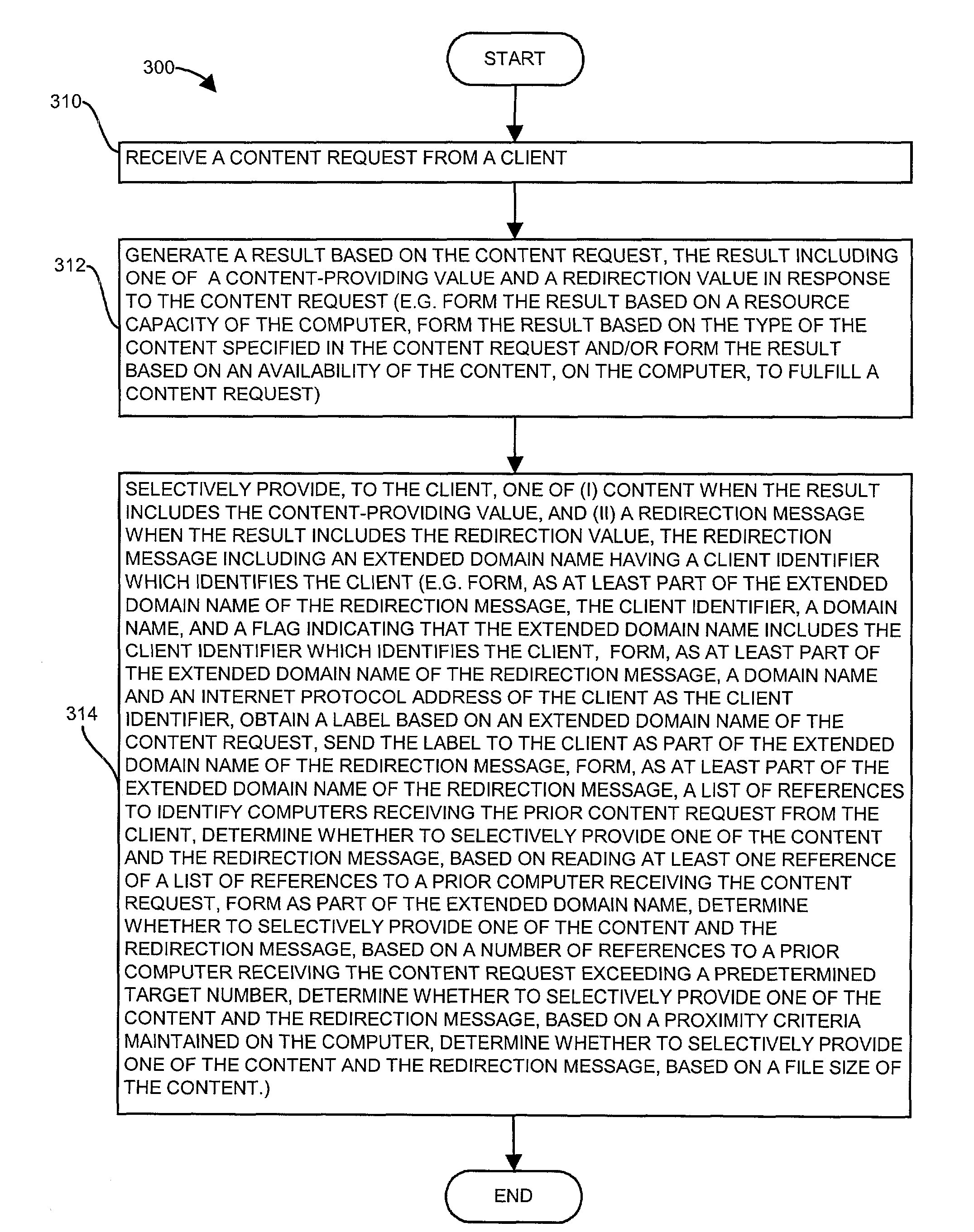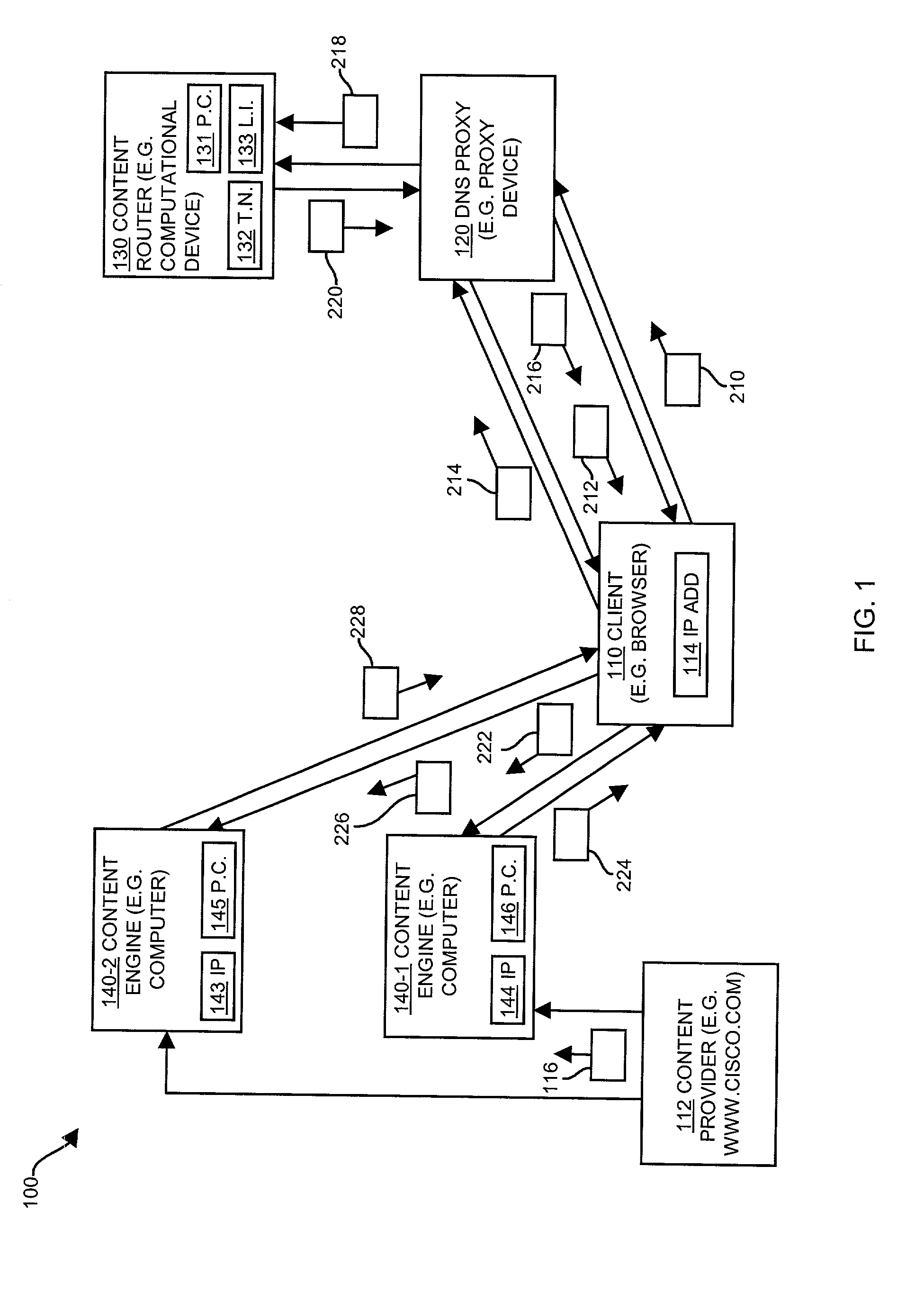Methods and apparatus for redirecting requests for content
a content and request technology, applied in the field of content redirection, can solve the problems of not always being an accurate predictor of delivery of content less effectively than otherwise possible, and conventional methods for identifying the location of the client requesting content are not always accura
- Summary
- Abstract
- Description
- Claims
- Application Information
AI Technical Summary
Benefits of technology
Problems solved by technology
Method used
Image
Examples
Embodiment Construction
[0043]Features of the invention provide improved methods and techniques for redirecting requests for content.
[0044]FIG. 1 shows a system 100 suitable for use by the invention. The system includes a client 110 (e.g. an Internet browser) having an IP (Internet protocol) address 114, a DNS (domain name service) proxy 120 (e.g. proxy device), a content router 130 (e.g. computational device) having a table of proximity criteria 131, a target number 132 and label information 133, content engines 140-1, 140-2 (e.g. computers) each having IP addresses 143, 144 and proximity criteria 145, 146, and a content provider 112 (e.g. www.cisco.com).
[0045]Each content engine 140-1, 140-2 is configured to provide content to requesting clients (e.g. the client 110) under the right set of circumstances, or alternatively redirect the clients to another content engine 140-1, 140-2. The content router 130 communicates with DNS proxies (e.g. the DNS proxy 120) in response to DNS requests. As will be explain...
PUM
 Login to View More
Login to View More Abstract
Description
Claims
Application Information
 Login to View More
Login to View More - R&D
- Intellectual Property
- Life Sciences
- Materials
- Tech Scout
- Unparalleled Data Quality
- Higher Quality Content
- 60% Fewer Hallucinations
Browse by: Latest US Patents, China's latest patents, Technical Efficacy Thesaurus, Application Domain, Technology Topic, Popular Technical Reports.
© 2025 PatSnap. All rights reserved.Legal|Privacy policy|Modern Slavery Act Transparency Statement|Sitemap|About US| Contact US: help@patsnap.com



